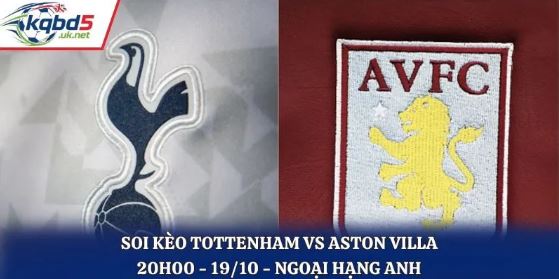Football moves fast, and a great pick is never an accident—it’s the product of structure, timing, and verified information. This long-form guide turns Soi Kèo Bóng Đá from guesswork into a repeatable process you can use every matchday. You’ll learn how modern odds reflect game realities, how to build a pre-match checklist, and how to connect each decision to trusted kết quả bóng đá at full-time. No gimmicks—just a practical, end-to-end framework you can rely on, season after season.
What “Soi Kèo Bóng Đá” Really Means in 2025
In today’s data-rich landscape, Soi Kèo Bóng Đá isn’t simply picking a side. It’s a disciplined approach that blends context (schedule, travel, motivation), information (lineups, absences, tactical trends), and price (how the market translates probability into odds). The goal isn’t to be dramatic; it’s to be consistent. That means:
- Treating each wager as a decision under uncertainty
- Using a repeatable checklist before you stake anything
- Closing the loop with confirmed kết quả bóng đá to learn and refine
Do this well, and the process itself becomes your edge.

The Four Pillars of a Solid Pick
- Context Clarity
Fixture density, short rest, weather, and venue dynamics shape intensity and chance creation. A midweek away trip after a high-tempo weekend can nudge tempo and rotations. - Reliable Team Information
Track who’s available, who’s carrying a knock, and how a coach adapts shapes. Absences at fullback or in the holding role often change ball progression and shot quality more than headline injuries. - Market Structure
Odds encode consensus probability. Soi Kèo Bóng Đá means reading those signals: opening lines, early moves, stabilization windows, and late steam when lineups drop. - Result Validation
After the final whistle, verified kết quả bóng đá closes the feedback loop. Your record isn’t just win/loss; it was the price good? and did the read match the game script?

Your Pre-Match Checklist (10 Minutes That Change Everything)
- Competition & stakes: league round, cup phase, or group scenario that alters risk tolerance.
- Recent minutes & intensity: three games in eight days? Expect rotation or lower pressing height.
- Likely lineups: focus on links (CB–DM–No.8 triangles, winger–fullback pairs).
- Style matchup: press-resistant build vs. high press, transition defense vs. pacey wingers.
- Shot profile: teams that create cutbacks and low crosses vs. long-range shooters; this matters for totals.
- Set-piece threat: aerial mismatches drive corners, cards, and “anytime scorer” angles for CBs.
- Referee tendencies: tolerance for contact affects cards and penalties.
- Market timing: take positions when liquidity is stable and news is priced in.
- Stake sizing: fixed-fraction or unit model—never improvise.
- Confirm learning path: log the pick and why; compare with the kết quả bóng đá later.
Reading the Main Markets Without Noise
- 1X2 (Match Result)
Clean and straightforward. Align with team context and shot quality patterns; avoid overvaluing narrative. - Asian Handicap
Price of strength. Half-balls and quarter-balls shape push/protect dynamics. Use them to express conviction without chasing big odds. - Totals (Over/Under)
Driven by pace, shot locations, and set-piece load. A missing target man can move totals more than a missing winger. - Corners & Cards
Corners correlate with territory and crossing volume; cards correlate with pressing intensity, referee profile, and derby tension. - Player Props
Shots, shots on target, or fouls won can express specific tactical reads (e.g., inverted winger cutting inside vs. a slow fullback).
Each market is a lens. Choose the lens that best matches your read, not the loudest price on the board.
Timing: When to Enter the Market
- Early windows: Useful if you have strong team news edges or schedule/spot reads.
- Mid cycle: Lines settle; great for measured positions with less news risk.
- Lineups drop: Rapid recalculation. If a key creator returns, totals and both-teams-to-score can swing.
- In-play: Only if you can translate live patterns into price edges. Otherwise, stick to pre-match plans.
Good timing isn’t luck; it’s knowing which phase rewards your style.
Risk Controls That Keep You in the Game
- Fixed units: 0.5–1.5 units per position, scaled by edge quality—avoid “all-in” impulses.
- Portfolio balance: Don’t stack correlated outcomes (home win + under when the script doesn’t support it).
- Stop rules: Weekly cap on exposure and losses; the best reads happen with a clear head.
- Record keeping: Track closing line value, not just results; beating the close matters over volume.
- Close the loop: Compare your pre-match read with verified kết quả bóng đá and event timelines.
A Simple, Repeatable Framework (PACE)
P – Profile: Team styles, strengths, and vulnerabilities.
A – Availability: Confirm key ins/outs and likely subs.
C – Context: Schedule, travel, stakes, weather, referee.
E – Entry: Choose market + timing + stake, then log the thesis.
If it’s not in your PACE notes, it’s not part of your edge.
Signal vs. Noise: Making Better Calls
- Signal: consistent patterns (xG trends, set-piece threat, zone occupation, pressing height maps).
- Noise: single odd results, social buzz, unverified “leaks.”
- Rule of three: you need three independent supports (e.g., schedule stress + missing fullback + cross-heavy opponent) before upgrading conviction.
How Odds Integrates With Results and Schedules
A smooth matchday flow keeps you organized:
- Fixture scan sets the slate and informs pacing.
- Checklist & PACE shape your lean.
- Market entry places your position.
- Full-time: verified kết quả bóng đá confirms outcome and feeds your post-match notes.
- Review: did the script match the thesis? Track that, not just W/L.
Practical Examples of Decision Framing (No Hype, Just Structure)
- Totals: If the favored side rotates creators and the opponent sits deep, consider unders or alt-lines—especially with a low-tolerance referee.
- Asian Handicap: When a dominant team faces travel fatigue, split stake between -0.5 and -0.25 to respect variance.
- Corners: Fullbacks who overlap vs. a narrow block raise crossing volume; corners and wide FKs become live.
- Cards: Press-vs-press and derby energy plus a strict referee profile can justify higher card totals.
Your read selects the market—not the other way around.
Post-Match: Turning Outcomes Into Improvement
When the whistle blows, your work isn’t done. Use confirmed kết quả bóng đá alongside event timelines to answer:
- Did the game state evolve as expected (early goal, late push, set-piece salvos)?
- Were your edges priced correctly (did lines move your way before kickoff)?
- Did you overweigh narrative and underweigh availability or schedule?
Write short reviews. Small notes today become big edges next month.
Responsible, Sustainable Practice
- Treat Soi Kèo Bóng Đá as analysis, not a chase.
- Use calm routines—same checklist, same stake logic.
- Respect off days; the market will still be here tomorrow.
- Keep football fun: community chats, match threads, and tactical discussions fuel better reads.
Conclusion
A smart pick is built, not guessed. Anchor your Soi Kèo Bóng Đá in structure: a clear checklist, disciplined timing, and a portfolio that respects variance. Let verified kết quả bóng đá close the loop on every decision you make. When your process is steady, outcomes stop feeling random—and your matchdays become calmer, clearer, and far more rewarding.

